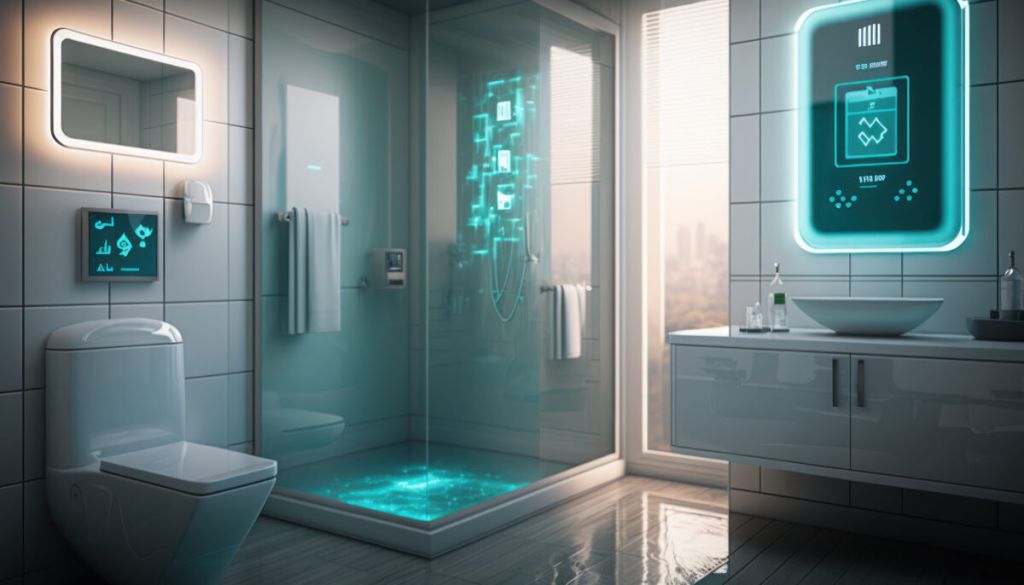
Smart Toilets for Water Conservation: Innovative Solutions for a Greener Future
Share
As technology continues to evolve, so does our ability to integrate it into everyday life to address pressing global issues. One such concern is water conservation, and the advent of smart toilets has the potential to make significant strides in this area. By incorporating cutting-edge technology, these toilets offer an innovative solution to conserve water while maintaining user convenience and comfort. This article delves into the world of smart toilets, exploring their features, benefits, and the impact they can have on our environment.

Understanding the Impact of Smart Toilets
The traditional toilet is one of the largest water consumers in the average household. According to the Environmental Protection Agency (EPA), toilets account for nearly 30% of residential indoor water use. In contrast, smart toilets for water conservation are designed to significantly reduce this footprint by utilizing advanced flushing mechanisms, sensor technology, and other water-saving features.
For instance, some models are equipped with dual-flush systems, allowing users to select a low-flow option for liquid waste and a higher flow for solid waste. This simple yet effective innovation can save thousands of gallons of water each year.
Key Features of Smart Toilets
Sensor Technology
One of the most remarkable features of smart toilets is their use of sensor technology. These sensors can detect when a user approaches and automatically open the lid, enhancing convenience and hygiene. More importantly, sensors are used to determine the appropriate amount of water needed for each flush, ensuring that no excess water is wasted.
Self-Cleaning Mechanisms
Another attractive feature is the self-cleaning mechanism found in many smart toilets. This function not only reduces the need for harsh chemical cleaners but also maintains the efficiency of the toilet over time. By keeping the bowl clean, these toilets further reduce water usage and promote a healthier environment.
Eco-Friendly Materials
Manufacturers of smart toilets often use eco-friendly materials in their designs. This commitment to sustainability extends beyond water conservation, as it minimizes the environmental impact of the toilets production and disposal processes.
The Environmental Benefits
The environmental benefits of smart toilets for water conservation are significant. By reducing water usage, these toilets help to alleviate the strain on municipal water supplies and lower water bills for consumers. Additionally, they contribute to the reduction of wastewater, diminishing the energy required for water treatment and ultimately decreasing greenhouse gas emissions.
The potential impact on global water conservation efforts cannot be overstated. If widely adopted, smart toilets could play a vital role in addressing water scarcity issues, particularly in regions prone to drought or with limited water resources.
Challenges and Considerations
Despite their advantages, there are challenges to consider when it comes to the widespread adoption of smart toilets. Cost is often a significant barrier, as these advanced systems can be more expensive than traditional models. However, the long-term savings on water bills and the potential environmental benefits can offset the initial investment.
Installation and maintenance can also present challenges. It's essential to ensure proper installation to maximize the toilet's efficiency and lifespan. Regular maintenance and updates to the system can help prevent issues and maintain performance.
The Future of Smart Toilets
The future of smart toilets is promising, with ongoing advancements and innovations poised to make them even more efficient and accessible. As technology continues to evolve, we can expect to see new features and improvements that further enhance their water-saving capabilities and user experience.
For more information on the latest trends and advancements in smart toilets and water conservation, visit this trends article. Additionally, if you're interested in learning about other ways to conserve water in your home, check out these residential water-saving tips.
Conclusion
Smart toilets represent a significant step forward in the quest for sustainable water management. By embracing these innovative systems, tech professionals and enthusiasts can play a pivotal role in conserving our planet's most precious resource. As we look toward the future, the integration of smart technology into everyday products like toilets will continue to drive positive change and support a greener, more sustainable world.

FAQs
What are the main features of smart toilets?
Smart toilets often include sensor technology, self-cleaning mechanisms, and eco-friendly materials to enhance water conservation and user convenience.
How do smart toilets help with water conservation?
Smart toilets utilize advanced flushing mechanisms and sensors to minimize water usage, reducing the strain on water supplies and lowering utility bills.
Are smart toilets worth the investment?
While smart toilets can be more expensive initially, the long-term savings on water bills and the positive environmental impact make them a worthwhile investment for many homeowners.
This article contains affiliate links. We may earn a commission at no extra cost to you.
